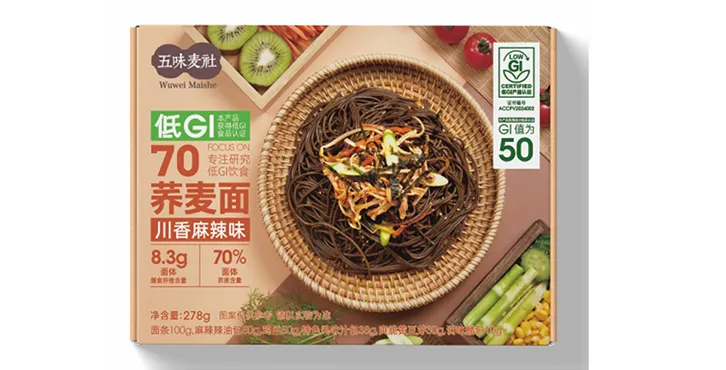Techniques for Preparing Noodles with a Traditional Knife Cutting Method
The Art of Knife Cut Noodles
Knife cut noodles, known as “dao xiao mian” in Mandarin, are a celebrated dish in Chinese cuisine, particularly within the region of Shanxi. This dish is distinguished not only by its delightful taste but also by the artistry involved in its creation. It symbolizes a harmony of tradition and technique that has been passed down through generations.
The essence of knife cut noodles lies in their preparation. Unlike machine-made noodles, which are uniform in size and texture, knife cut noodles are made from a simple dough composed of flour and water. The preparation process starts with kneading the dough until it reaches a smooth and elastic consistency. This dough is then allowed to rest, which permits the gluten to develop, resulting in a chewier texture that holds sauces exceptionally well.
The pivotal moment in the creation of this dish is the cutting process. Traditionally, skilled chefs use a large Chinese knife to make quick, fluid cuts directly from the block of dough to create long, flat noodles. The technique is mesmerizing to watch and requires significant precision and practice. The chef stands before a wooden cutting board with a block of dough, swiftly slicing it into strips that cascade down like ribbons. Each slice is unique, offering a delightful unevenness that enhances the homemade charm of the dish.
Culinary experts often argue that the art of knife cutting is akin to performing a delicate dance. The chef’s movements are graceful yet deliberate, ensuring that each noodle retains a certain thickness that allows it to capture flavors beautifully. These noodles are typically thicker than other varieties, which means they absorb broth and sauce in an exciting way, adding depth to each bite.
Once the noodles are cut, they are boiled in hot water until cooked al dente. This stage is crucial, as the texture of the noodles can make or break the dish. The ideal noodle should be chewy but not overly thick, allowing for a perfect balance with the accompanying sauces and ingredients.
knife cut noodles

Knife cut noodles can be served in various ways. They are often tossed with horse meat, a specialty in their homeland, alongside a rich sauce made from soy sauce, garlic, and chili oil. Alternatively, they can be served in a warm broth filled with vegetables and proteins such as chicken, beef, or tofu. Each region in China has its variation, contributing to the dish’s versatility and widespread appeal.
The toppings significantly enhance the enjoyment of knife cut noodles. Fresh herbs, a drizzle of sesame oil, and a sprinkle of chili flakes can elevate the flavors. The addition of sautéed vegetables not only adds color but also a crunch that contrasts beautifully with the chewiness of the noodles.
Furthermore, the social aspect of enjoying knife cut noodles cannot be overlooked. Sharing a bowl of steaming noodles with family and friends fosters connection and communicates the warmth of Chinese hospitality. It’s a dish often enjoyed during family gatherings and celebrations, encapsulating the importance of food in bringing people together.
In recent years, knife cut noodles have gained popularity outside of China, appearing on menus in Asian restaurants worldwide. Chefs and home cooks alike are discovering the joys of making these unique noodles, appreciating the craftsmanship that goes into their creation. The rise of food blogs and cooking shows has played an essential role in introducing this dish to a broader audience, highlighting its cultural significance and culinary techniques.
In conclusion, knife cut noodles embody much more than just a meal; they represent a rich culinary heritage and the passion for food that transcends borders. From the precise art of cutting to the diverse flavor combinations, every aspect of this dish celebrates the love of cooking and the joy of sharing. Whether enjoyed in a cozy restaurant or homemade in a kitchen, knife cut noodles promise to create lasting memories and a sense of togetherness. The next time you encounter these remarkable noodles, take a moment to appreciate the skill and tradition behind them, savoring every delightful bite.
-
Unleash Your Inner Chef with Delectable Italian Pasta CreationsNewsAug.01,2025
-
Savor Health and Flavor: Irresistible Soba Noodles for Sale Await!NewsAug.01,2025
-
Nourish Your Body with Premium Organic Ramen - A Culinary Delight AwaitsNewsAug.01,2025
-
Elevate Your Dishes with Our Exquisite Kinds of Egg NoodlesNewsAug.01,2025
-
Dive into Flavorful Convenience with Our Ramen OfferingsNewsAug.01,2025
-
Discover Exquisite Types of Naengmyeon and Chilled Soba NoodlesNewsAug.01,2025
-
Is Whole Wheat Pasta Healthy?NewsMay.30,2025
Browse qua the following product new the we

















































































































